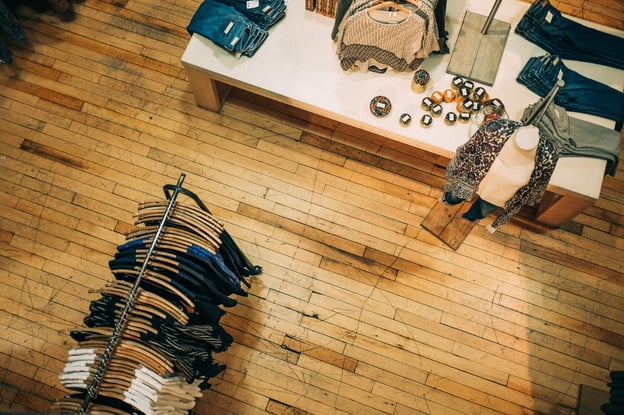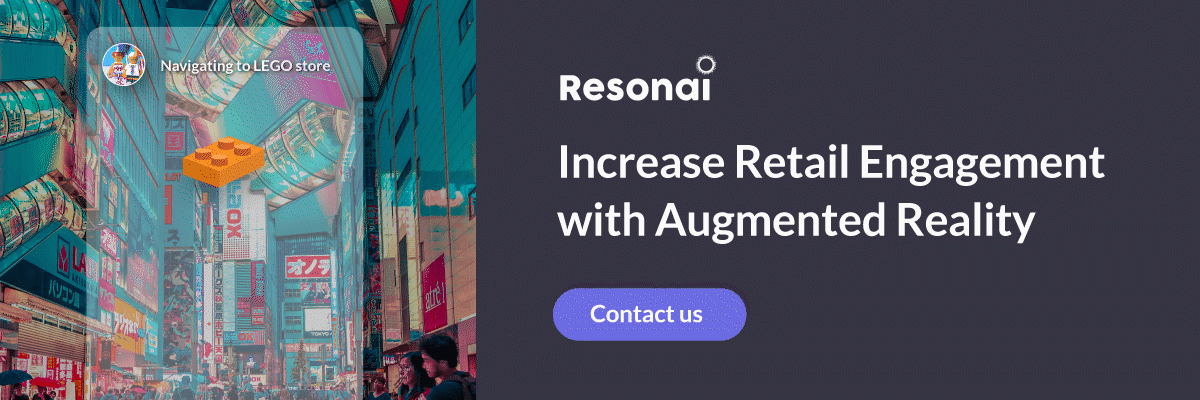The Big List of Retail Foot Traffic Statistics
Here’s the latest retail foot traffic data you need to know when building your retail marketing plan.

Retail is in a bit of a flux right now, shifting and changing in ways that are difficult for businesses and building owners to account for. While one day you may be raking in cash, the next can see just a few transactions roll in. Nevertheless, the insights retail foot traffic statistics give us into consumer behavior and sentiment are valuable, helping us plan for stormy weather and smooth sailing. Here are some critical pieces of retail foot traffic data driving the industry today and what they mean for business and building owners.
Jump to a section
Rising fuel and grocery prices are keeping consumers from stores
Brick and mortar sales are still outperforming ecommerce, even with setbacks
Retail foot traffic statistics show superstore brands finding more success than others
Omnichannel shopping is the new mainstream
Read more on all the ways retail foot traffic impacts you (and how to capture it!) with “Retail Foot Traffic: The Essential Guide”
Rising fuel and grocery prices are keeping consumers from stores
The combined factors of rising costs related to global supply chain disruptions and falling coronavirus restrictions have created a mix of pessimism and optimism among consumers and showed some shaky situations popping up in retail foot traffic data; consumers want to return to brick and mortar shopping, but factors outside their control seem to be holding them back at every step.
- Back in October, consumers had an optimistic outlook for the future, with 44% believing that the economy will recover within 2-3 months, according to a survey published in December 2021.
- More recently, however, there has been some pessimism, with 32% of consumers believing that their financial positions will worsen in the coming year.
- Consumers seem apt to avoid over-spending amid rising fuel and grocery costs. The week of March 7, 2022, saw a 4.3% decrease in foot traffic across retailers compared to the same period three years ago.
- The same report indicated that consumers aren’t “trading down” from premium retailers to dollar stores despite a dip in foot traffic.
- Notably, retail foot traffic trends indicated that consumers returned to stores before the steep rise in fuel and grocery prices. Retail foot traffic was 3.9% higher during the week of November 7, 2021, compared to the same week in 2019.
- GenXers spend the most money of the generations currently shopping, outspending Millennials by 41% and Baby Boomers by 18%.
Brick and mortar sales are still outperforming ecommerce, even with setbacks
Retailers are working to provide innovative new experiences to consumers that encourage them to return to stores, blending technology with traditional shopping to create experiences that can’t be matched by ecommerce. These new solutions, combined with customers who want to go back out into the world, look to be the foundation of tomorrow's brick and mortar experience.
- Overall, January 2022 foot traffic was down 7.7% compared to January 2019, but seeing a major recovery versus peak pandemic levels.
- Ecommerce penetration was 19.1% in 2021, with the rest going to offline sales. This means that consumers are still spending the vast majority of their money at brick and mortar stores, despite ecommerce sales increasing for years.
- The same source shows that growth was almost identical between digital and physical channels, with ecommerce clocking in at a 14.2% increase while offline retail was 14%.
- Some retail categories are lagging. Home fitness spending has sunk from pandemic levels as gyms reopen, and apparel has seen a 10.2% fall in retail foot traffic compared to 2019. Both stats indicate that the categories will need changes in the future.
- Shopping center traffic still hasn’t recovered to its 2019 levels but did see a 32.2% rise from 2020 to 2021.
Retail foot traffic statistics show superstore brands finding more success than others
With retailers facing supply chain issues and inflation, it’s a tough time to run a small business. However, these challenges are creating opportunities for superstore retailers such as Costco that can offer products in high volumes at lower prices. The boom is nice for mega-retailers with massive warehouses, but it’s not all doom and gloom for the little guys.
- Wholesale retailers like Big Lots, Sam’s Club, and Dollar General maintained their gains from recent years and have also seen comp growth for foot traffic.
- Costco is leveraging its wide product offering particularly well, seeing a 6.8% increase in global foot traffic amid gas shortages and rising grocery costs.
- However, retail workers have been quitting their jobs, with 686,000 people reportedly leaving retail jobs in November 2021. That shakes out to a 4.9% quits rate in the industry, making it more difficult for retailers to meet the needs of the foot traffic passing through their stores.
- In terms of foot traffic, smaller, local businesses are outperforming larger brands across banking and finance, restaurants and food, services, shopping, and transportation.
- Shopping malls are showing signs of recovery, with one group citing an 11% increase in sales compared to last year and 43% year-over-year growth, despite a reported 6.5% decrease in overall retail foot traffic.
Omnichannel shopping is the new mainstream
Of all the changes that have come to the retail environment, omnichannel shopping is perhaps the most important. Consumers research products online and use physical stores as showrooms, with retail foot traffic statistics providing insights into in-store behaviors that can help optimize floor plans, staffing, and more. Leveraging these statistics for higher sales and customer retention is important, but it requires the right tools.
- Companies with strong omnichannel engagement strategies retain 89% of their customers on average, versus 33% retention among companies with weak omnichannel strategies.
- Retail returns are growing alongside ecommerce sales, with more clothes, shoes, and other purchases making their way to the exchanges pile. Retailers can now expect 16.6% of merchandise to come back, an increase from 10.6% in 2020. That could mean trouble for companies that accept online returns in-store, as it means longer queues for customer service and dealing with all those unwanted items.
- Augmented and virtual reality are becoming more important to consumers as parts of omnichannel retail, with 46% intending to spend more time in the metaverse in the future.
- 80% of consumers are more likely to purchase something if they have a personalized shopping experience, which omnichannel methods such as digital signage and augmented reality shopping can provide in-store.
As these stats show, technology and omnichannel shopping are key to the personalized shopping experiences consumers crave. Resonai’s Vera platform can provide your store or mall with the tools you need to deliver a personalized, omnichannel shopping experience that will drive sales and retention.
Providing insights into retail foot traffic statistics in your business or building, Vera can be used to create top-tier digital signage, analyze foot traffic trends, engage with customers, and make facility management a breeze. Are you ready to learn more? Get in touch with Resonai today and set up a free demonstration.
Subscribe to Our Newsletter!
Read More
Retail Foot Traffic: The Essential Guide
In the ever-shifting retail landscape, maintaining an optimized business strategy requires insight...
The Big List of Post-Pandemic Mall Foot Traffic Statistics
The global pandemic took a toll on retail, especially mall foot traffic. But the “death of the...
4 Retail Foot Traffic Trends Shaping Modern Commerce
Recent developments in retail foot traffic trends prove that, while there was a lull due to the...

